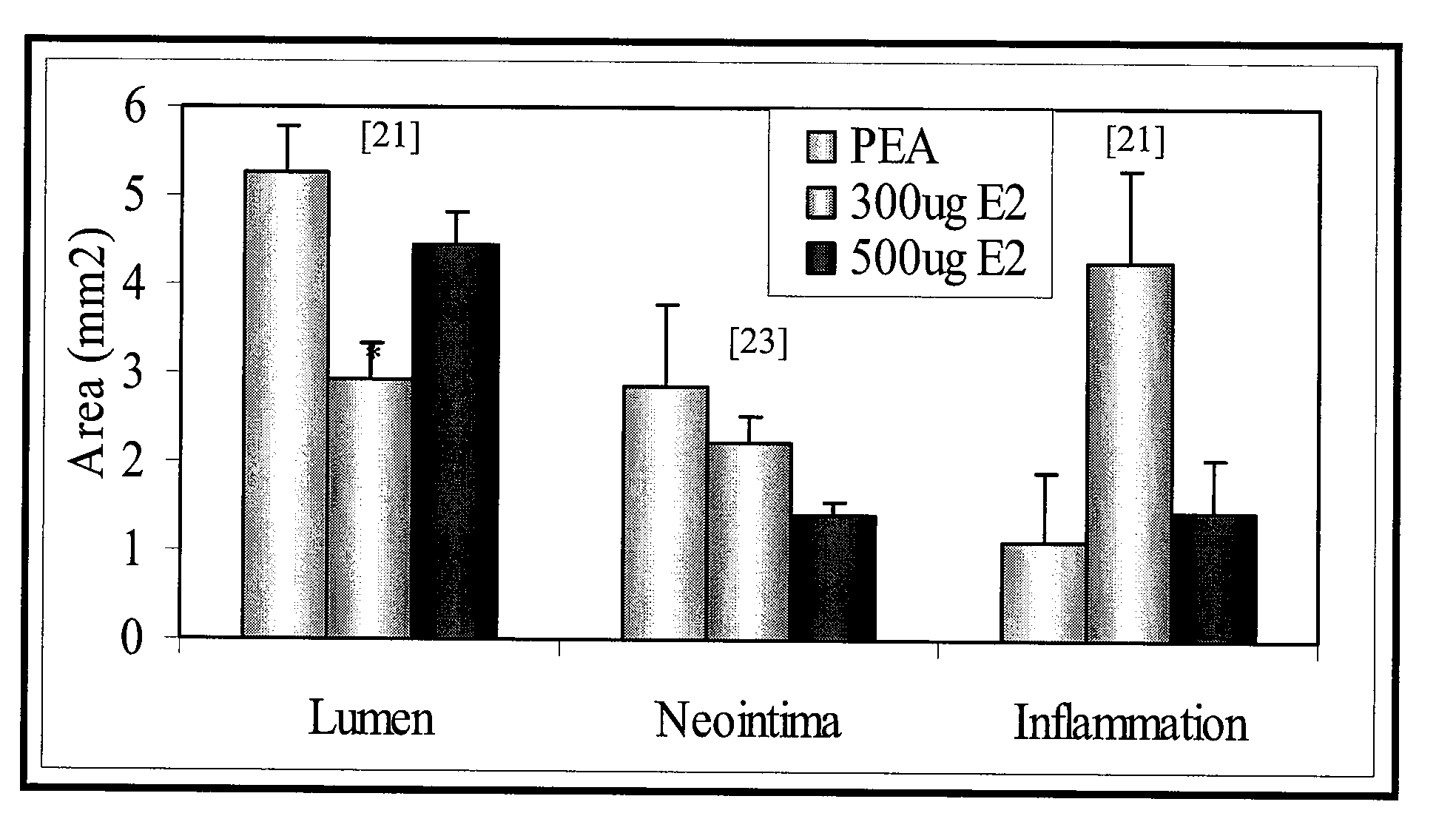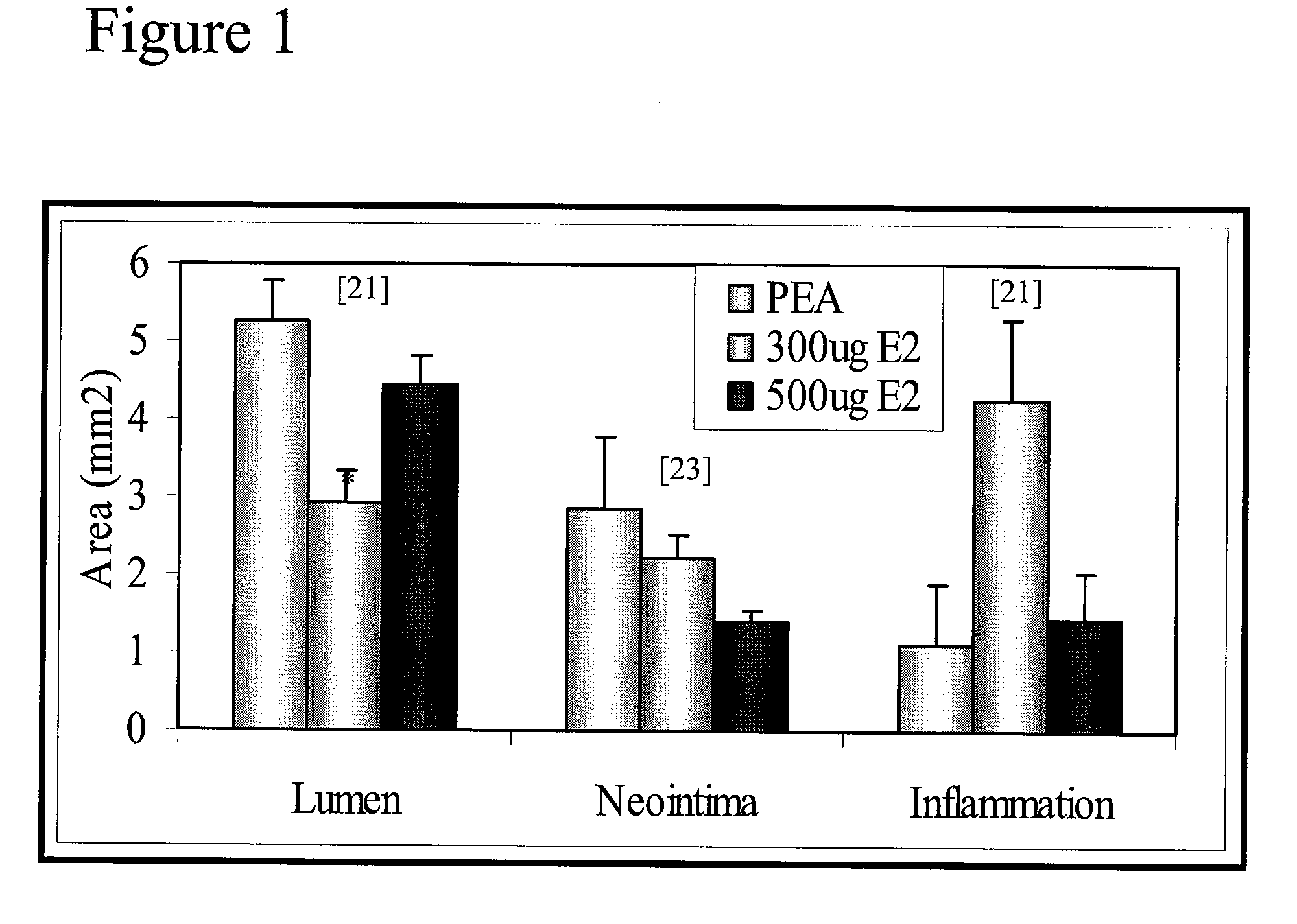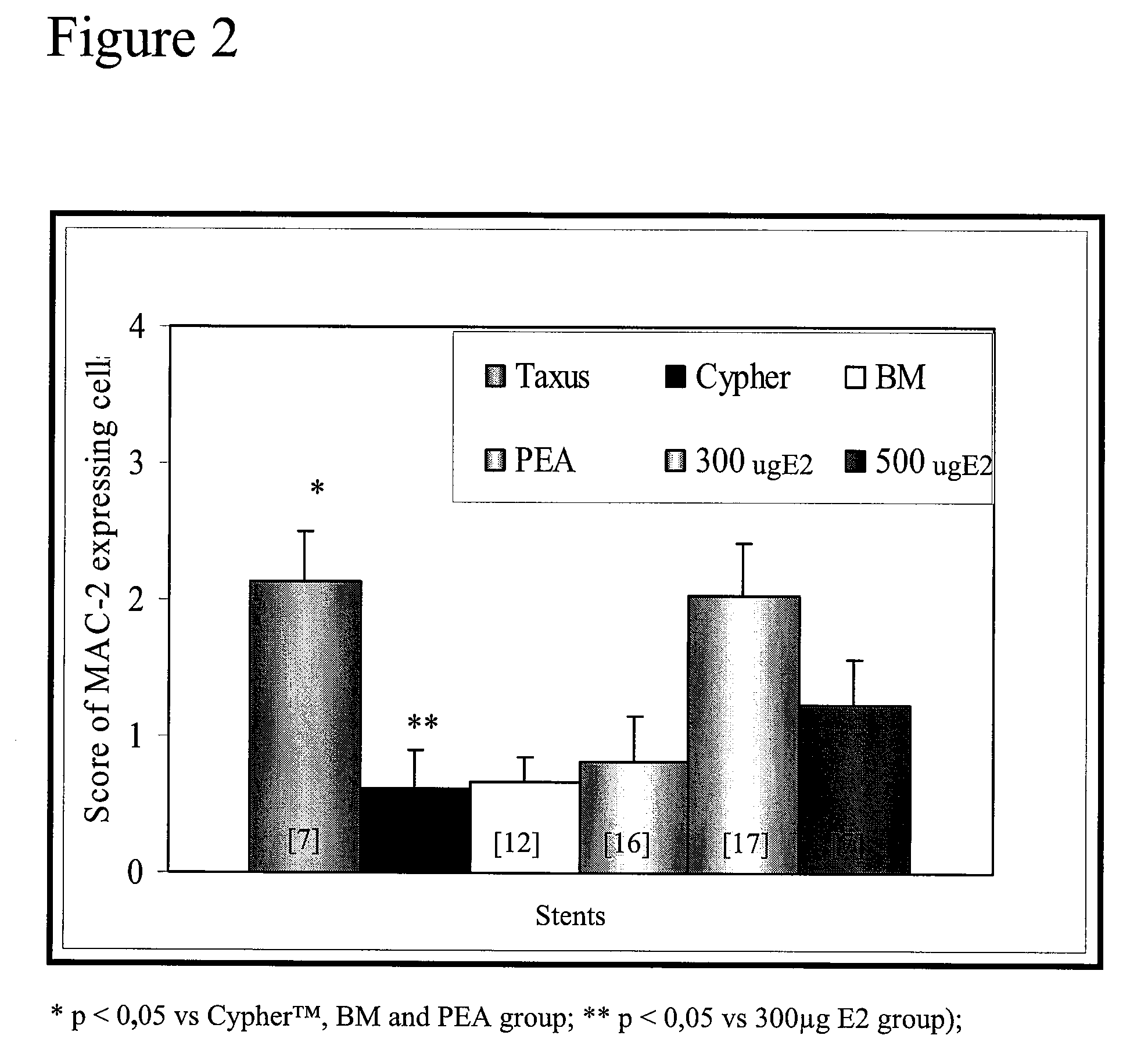Implantable devices for promoting reendothelialization and methods of use thereof
- Summary
- Abstract
- Description
- Claims
- Application Information
AI Technical Summary
Benefits of technology
Problems solved by technology
Method used
Image
Examples
example 1
Material and Methods for Examples 2 to 4
[0063]Pre-Operative Procedures Animals were monitored and observed at least 5 days prior to experimental use. Within 24 hours prior to the procedure, the animals were started on a dosage of 650 mg aspirin, 75 mg Plavix™ and 30 mg nifedipine orally.
[0064]Stents and hormone used for the procedures The polymer poly (ester-amide) (PEA) / estradiol (E2) stents used in Examples presented herein were prepared by MicroPort (MicroPort Medical Co, Ltd. Shanghai). Stainless steel bare metal stents were of 18 mm and 23 mm length and were spray coated by MicroPort with 300 μg or 500 μg of E2 matrixed with MediVas™ poly (ester-amide) (MVPEA.I.(Ac)) tempo polymer. In addition to the polymer-steroid matrixed base coat, a 200 ug MVPEA.I.(Ac).tempo protective topcoat was applied to the stents to decrease drug elution speed. The stents were sterilized by ethylene oxide at the MicroPort Medical Co facilities under the recommendation of Medivas. The sizes of Cypher™...
example 2
Effect of 16.7 μg / mm (300 μg on 18 mm stent) and 27.8 μg / mm (500 μg on 18 mm of Stent) 17 Beta-Estradiol on Neointima Formation
[0072]Animal groups Vascular healing (efficacy study) was evaluated in six animals for each type of stent (bare metal stent (BM), polymer poly (ester-amide) (PEA) only, PEA with 300 μg E2, PEA with 500 μg E2, at 24 hours, 14 days, 1 and 3 months after the stent implantation and 2 animals for Cypher™ and Taxus™ at 1 month post-implantation.
[0073]Stents Three stents were implanted in each animal. All animal groups were successfully completed and survived until the pre-determined time point.
[0074]Morphometric analysis was performed for each stented artery. Measurements of the neointima area (Neointima), the lumen area (Lumen), media area (Media) (i.e. thickness of intima and adventitia together), and the percentage of stenosis are summarized for control bare metal stent (BM), PEA polymer only (PEA), coated with PEA+300 μg of E2 (300 μg E2) or PEA+500 μg of E2 (...
example 3
Effect of 16.7 μg / mm (300 μg on 18 mm stent) and 27.8 μg / mm (500 μg on 18 mm of Stent) 17 Beta-Estradiol on Macrophage Infiltration
[0076]Immunohistology analysis was performed to determine the degree of macrophage infiltration in the wall of the stented arteries. Macrophage infiltration is used as an inflammation marker and as an indication of risk of thrombosis. Macrophage infiltration was evaluated using an anti-MAC-2 specific antibody (MAC-2), a cell surface marker for macrophages. Macrophage infiltration was scored for each strut as follow: 0: absence of macrophages, 1: very rare number of macrophage, 2: limited number macrophages, 3: high number of MAC-2 positive cells, 4: very high number of macrophages around the strut and between the struts. The mean of scores of the struts corresponds to the score for the artery. As may be seen in FIG. 2, after 1 month, the 300 μg E2 group had more macrophages (mean grade of 2) than three other groups but it is comparable to infiltration le...
PUM
| Property | Measurement | Unit |
|---|---|---|
| Time | aaaaa | aaaaa |
| Time | aaaaa | aaaaa |
| Time | aaaaa | aaaaa |
Abstract
Description
Claims
Application Information
 Login to View More
Login to View More - R&D
- Intellectual Property
- Life Sciences
- Materials
- Tech Scout
- Unparalleled Data Quality
- Higher Quality Content
- 60% Fewer Hallucinations
Browse by: Latest US Patents, China's latest patents, Technical Efficacy Thesaurus, Application Domain, Technology Topic, Popular Technical Reports.
© 2025 PatSnap. All rights reserved.Legal|Privacy policy|Modern Slavery Act Transparency Statement|Sitemap|About US| Contact US: help@patsnap.com



